The treasure worth $19 billion hidden beneath the ocean, a 4,000-year-old tomb, skeletal remains adorned with a crown, and many other archaeological mysteries around the world will reveal the lives of ancient peoples.
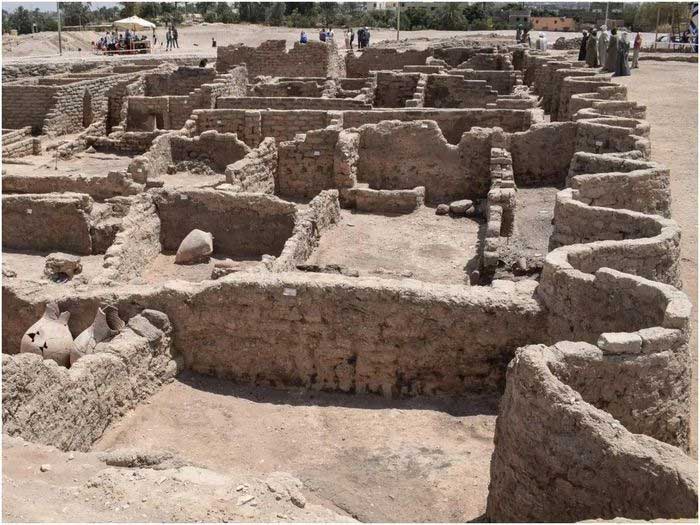
The 3,000-Year-Old City Buried Under Sand (Egypt) is believed to be the “lost golden city”, dating back to the reign of Amenhotep III. The site was discovered near Luxor, the home of the Valley of the Kings. After seven months of excavation, several nearby areas were uncovered, including a complete bakery with ovens and storage ceramics, as well as administrative and residential districts. (Photo: Business Insider).
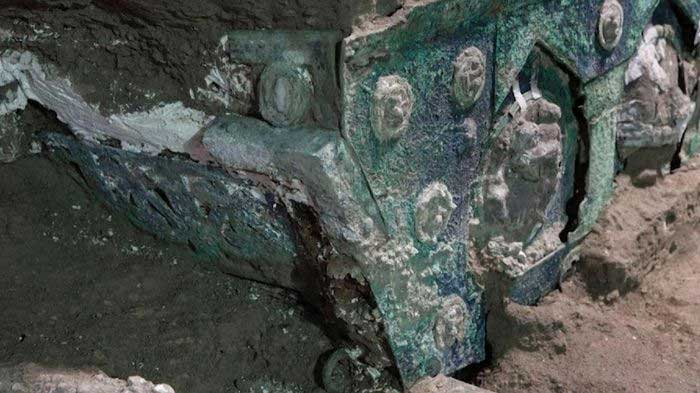
Ancient Ritual Chariot (Italy) was found at a villa near Pompeii, an ancient city in Southern Italy. This is thought to be a luxurious vehicle used in ceremonies such as weddings in ancient times. The chariot, made of bronze and almost completely intact, shows traces of wood and the impressions of ropes. (Photo: Focus.it).
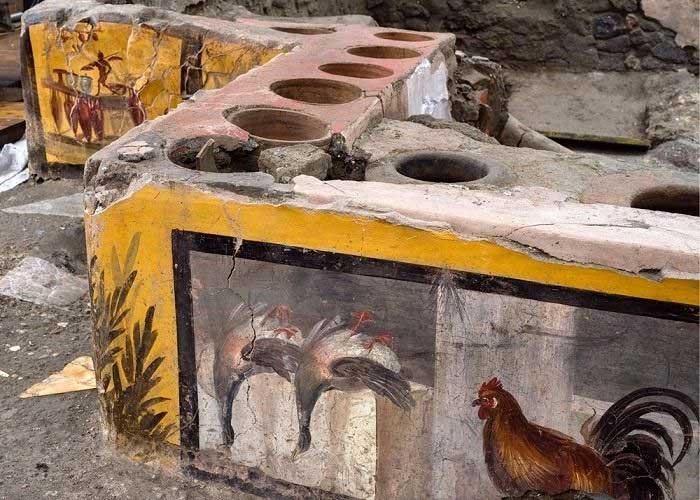
2,000-Year-Old Restaurant in Pompeii (Italy) was discovered in 2019 in remarkably preserved condition due to the volcanic ash. The frescoes on the bar are believed to depict dishes that customers could order. Additionally, archaeologists found pieces of pig, goat, fish, duck bones, and snail shells stored in clay pots. This discovery serves as evidence of the dishes served in the restaurant. (Photo: Le Sirenuse).
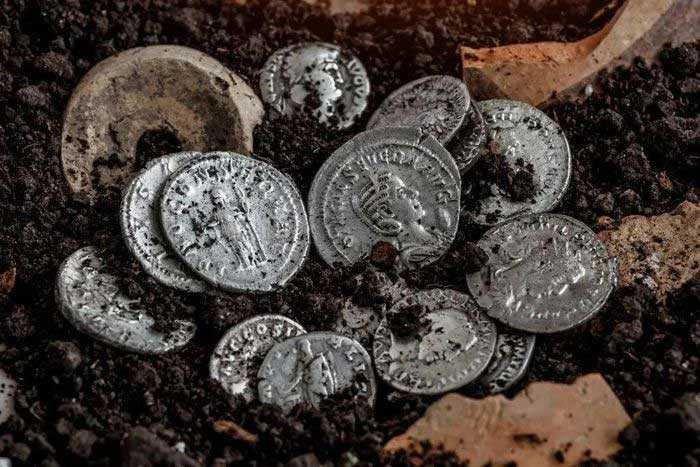
Ancient Roman Treasure Hoard (Germany): More than 5,500 Roman silver coins were discovered in the bed of an ancient river in Augsburg, Germany. According to archaeologists, these coins are denarii, dating back approximately 1,800 years. The origin of these coins remains a mystery. Archaeologists believe they may have been washed away for centuries by a flood in the Wertach river. (Photo: The European Times).
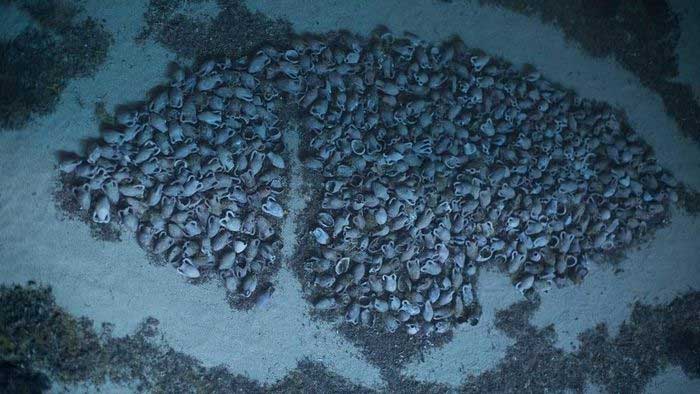
Roman Shipwreck in Sicily (Italy) was discovered at a depth of 92 meters, dating back over 2,000 years. At the wreck, scientists found the ship filled with containers of wine and olive oil. The discovery contributes to understanding the trade of goods, life aboard ships, and the relationships among coastal Mediterranean inhabitants. (Photo: CNN).
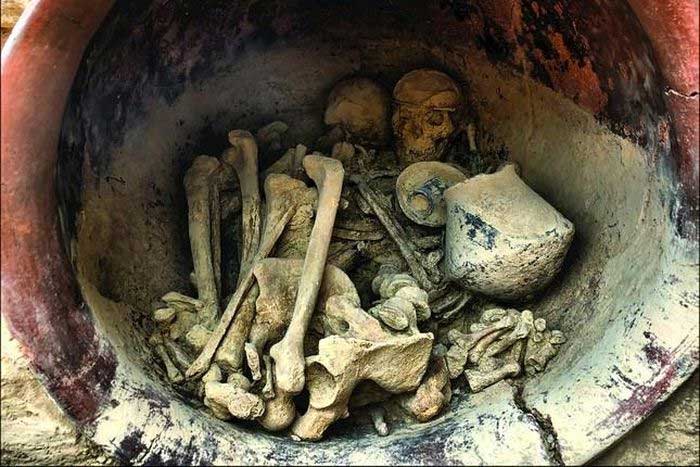
Hypothesis about Women’s Authority in Ancient Spain: In 2014, researchers excavated two sets of remains, one male and one female, approximately 3,700 years old, buried together. (Photo: The New York Times).
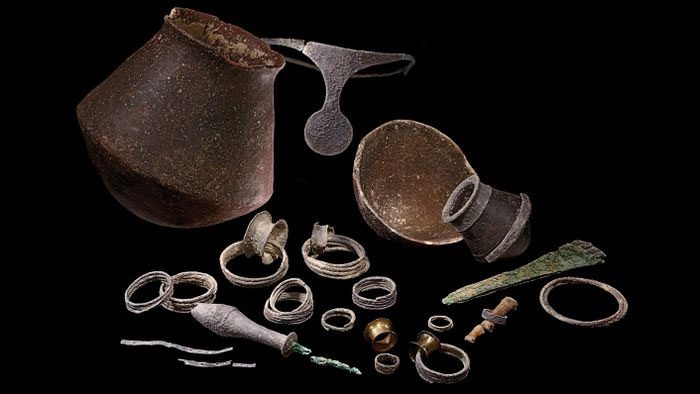
On the remains of the woman, archaeologists found a collection of silver jewelry, such as rings, bracelets, and a crown. Meanwhile, the man buried beside her had only gold earrings, a ring, and a bronze dagger. According to scholars, this woman belonged to the ruling class in El Argar society, with the crown on her head symbolizing power. (Photo: CNN).
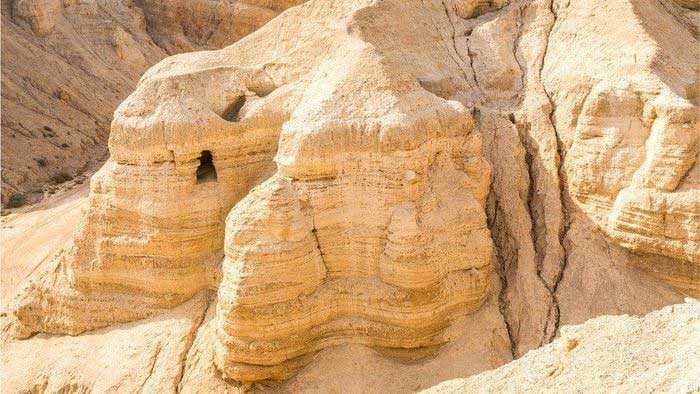
Fragments of the Dead Sea Scrolls in a Cave in the Judean Desert (Israel) include passages written in Greek, with the name of God written in ancient Hebrew. These pieces of paper are believed to be part of the biblical books of the prophets Zechariah and Nahum. Additionally, scientists discovered rare coins, a 6,000-year-old skeleton of a child, and a basket dating back 10,000 years here. (Photo: BBC).
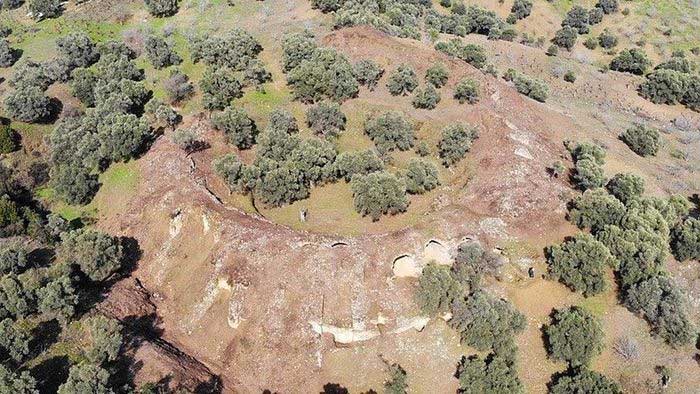
1,800-Year-Old Roman Amphitheater in Turkey was discovered in 2020 on the slopes of Mastaura. This is believed to be the site of gladiatorial combat as well as contests with wild animals. Most of the amphitheater lies underground, with the central area covered by wild vegetation. (Photo: Imperium Romanum).
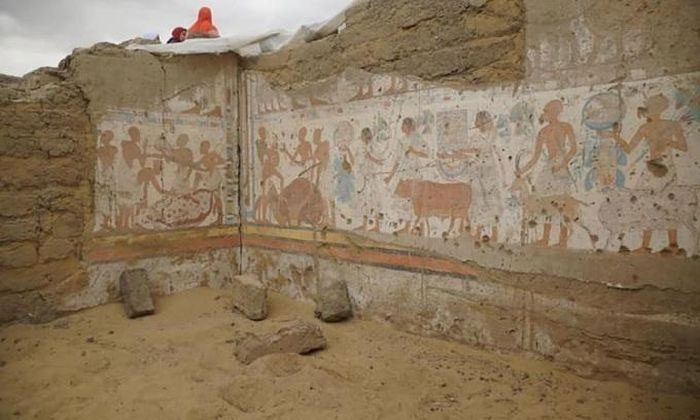
Tomb of Ptah-M-Wiah – Chief Treasurer During the Reign of Pharaoh Ramses II (Egypt) was discovered by a team of researchers at Cairo University. The tomb includes a temple dedicated to the goddess, a small pyramid, and a courtyard. The walls of the tomb are impressively carved with scenes of offerings, the slaughter of a calf, and more. (Photo: ARTnews.com).

5,000-Year-Old Egyptian Tombs in Egypt were discovered in an almost intact condition. These tombs were for high-ranking officials in ancient Egypt, such as palace supervisors and priests. Inside these tombs are numerous works of art and distinctive architectural structures, revealing the daily life of ancient Egyptians. (Photo: El Confidencial).
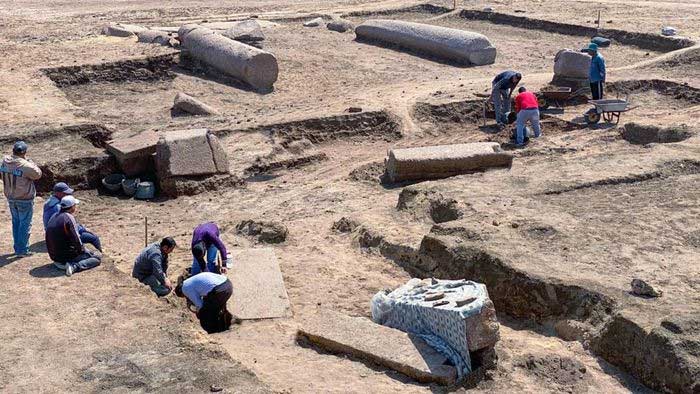
Ancient Temple of Zeus in Egypt was found at the archaeological site of Tell el-Farma. Currently, archaeologists are continuing to excavate the ruins here. According to the latest information, inscriptions found on some granite blocks indicate that Roman Emperor Hadrian (who reigned from 117-138 AD) renovated this temple. (Photo: Verve times).

Treasure from the Wreck of the San Jose off the Coast of Colombia contains gold, silver, and jewelry, discovered in 2015. In 1708, the Spanish warship San Jose caught fire and sank to the ocean floor after a battle with four British ships. Although it was a Spanish warship, it lies on the seabed of Colombia, and after many years, the treasure worth $19 billion remains disputed between these two countries. (Photo: National Geographic).
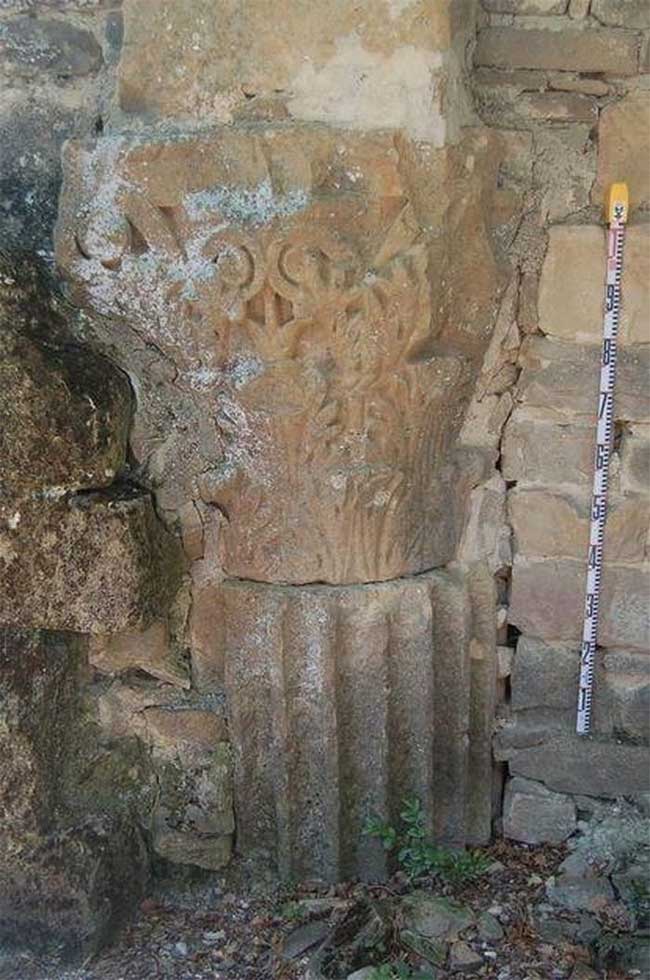
An Ancient Roman City in Spain is believed to date back to the first century, towards the end of the Flavian period or the beginning of the Antonine period. Researchers uncovered the remains of ancient buildings in the area near the Aragon river in Northern Spain. However, there are no historical records documenting the city of these buildings. This is also the moment when this city was discovered. Currently, archaeologists have also identified some streets, sidewalks, and drainage systems. (Photo: EL PÁIS in English).
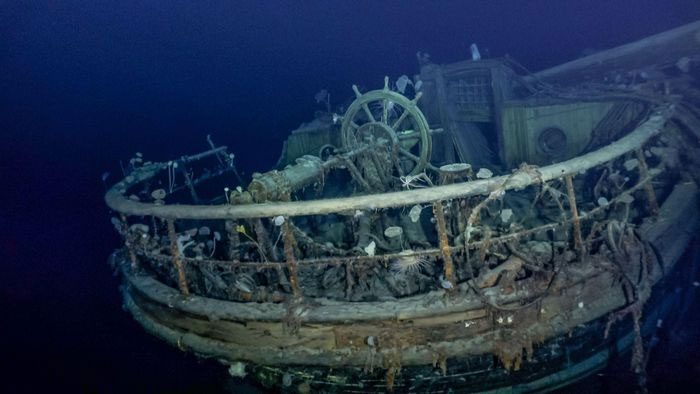
The Wreck of the Endurance Carrying Famous Explorer Ernest Shackleton in Antarctica. In 1915, the Endurance got stuck in the ice, prompting Shackleton and his crew of 27 to embark on a year-long adventure to return to the mainland. It was not until 2022 that the shipwreck was found on the ocean floor of the Weddell Sea by a polar research team. (Photo: Esquire.)
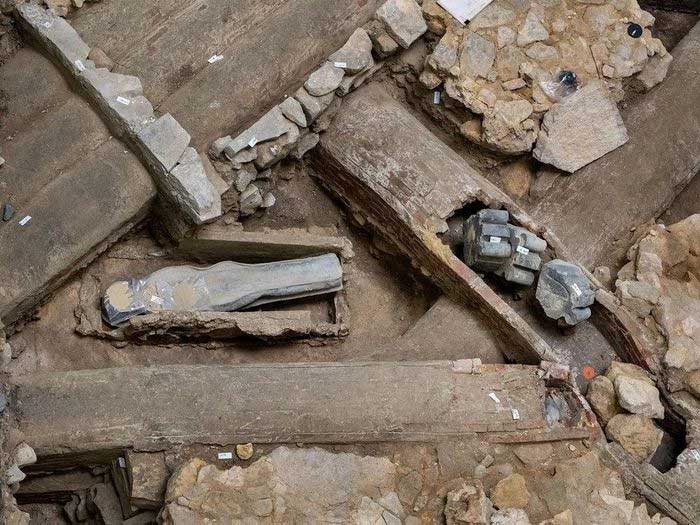
Ancient Coffin Discovered Beneath Notre-Dame Cathedral in Paris, France: Following the devastating fire that engulfed Notre-Dame Cathedral in 2019, archaeologists were called in to assess the extent of the damage. During excavation work at the cathedral in early 2022, two lead coffins were uncovered, but their identities remained unknown. The latest discovery on December 9, 2022, led researchers to believe that the coffins contained the remains of two affluent men: one a clergyman and the other a young knight. (Photo: Smithsonian Magazine).
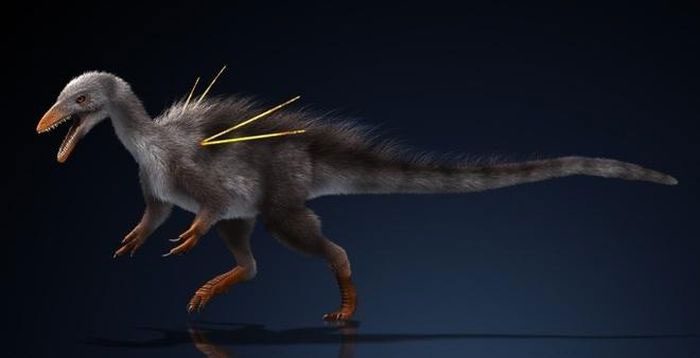
Fossil Discovery of a Strange Dinosaur in Brazil: The fossil of a 110-million-year-old dinosaur named Ubirajara jubatus has been discovered. Researchers stated that it was small in size, walked on two legs, and featured long, ribbon-like feathers and stiff projections from its shoulders. According to scientists, this creature had a very distinctive appearance, unlike any species previously known. (Photo: The Fossil Forum).
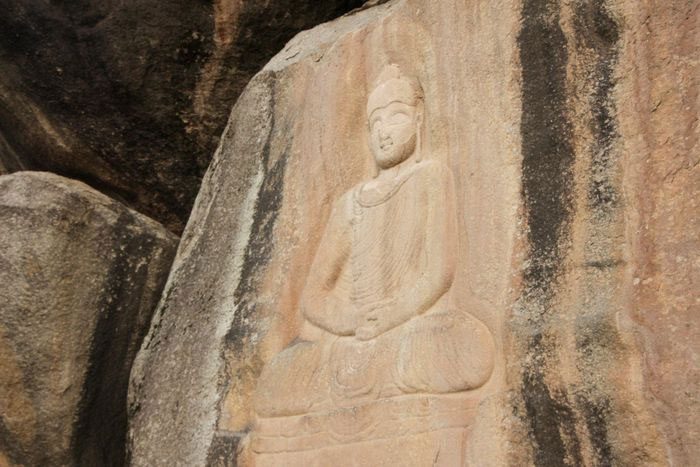
2300-Year-Old Ancient Temple Discovered in Pakistan: Located in the town of Barikot, archaeologists believe the temple dates back to the 2nd century BCE. In addition to the temple, the research team unearthed various artifacts including statues, coins, and pottery. (Photo: Daily Sabah).


















































